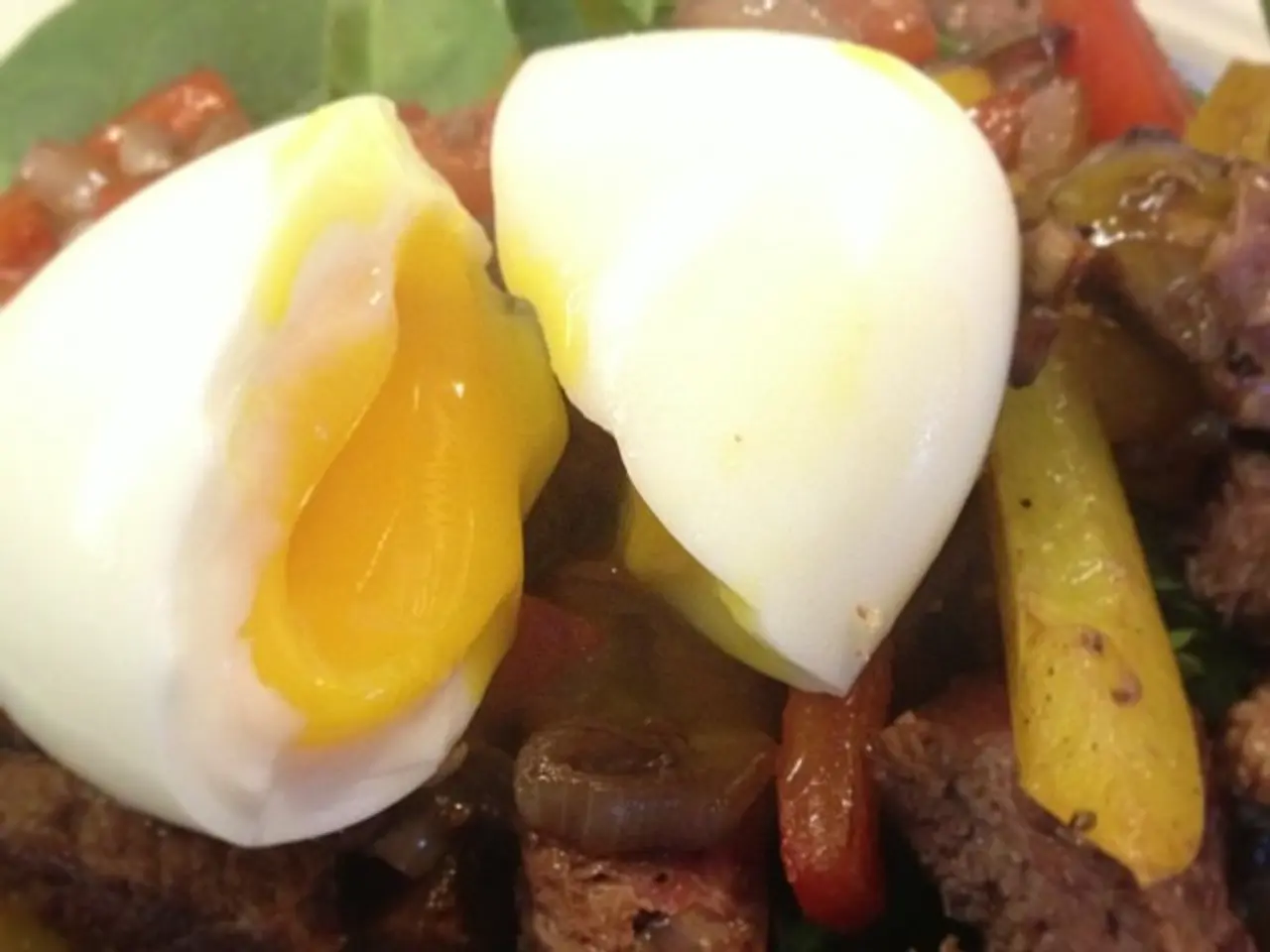Exploration of the Chemistry and Techniques for Perfectly Prepared Eggs
In a groundbreaking discovery, scientists at the University of Naples Federico II have developed a new method for cooking the perfect egg: the periodic cooking method. This innovative technique involves transferring eggs every two minutes between two bowls of water at different temperatures - one boiling and the other lukewarm at approximately 30°C (86°F) [1].
The key to this method lies in the periodic heating and cooling cycles, which control the cooking of egg whites and yolk separately. By alternating the eggs between hot and lukewarm water, the whites are set gradually, while the yolk achieves a creamy texture that can be spread like butter.
The periodic cooking method is slower than traditional hard-boiling but offers a superior texture—set whites and a creamy, spreadable yolk. To confirm the improved quality of the egg cooked this way, the researchers conducted chemical analysis, taste panels, texture profile analysis, and a sensory taste test [1].
The FT-IR spectroscopy was used to probe the chemical structure of the egg yolk and white, assessing how protein breakdown had affected the texture of the eggs cooked using different methods. The results showed that the periodic cooking method preserved the nutrients in the eggs better than other traditional cooking methods, making it a healthier option for those looking to maximize their morning nutrition [1].
The researchers found the ideal temperature to cook an egg yolk is around 65°C, while the egg white should be cooked at around 85°C. The optimal temperatures and times for the periodic cooking method are 100°C and 30°C, switching every two minutes for a total of 32 minutes [1].
While the new method may take a bit longer than traditional cooking techniques, the researchers believe it is well worth the effort for the superior texture and taste it provides. In fact, Professor Di Maio, who personally cooked 160 eggs for the sensory analysis, has been converted to the periodic cooking method.
Interestingly, the discovery in the art of egg cooking may have been more than just a scientific study for Di Lorenzo, as she suggests it was a quest to try and like eggs. Despite her personal dislike for eggs, the periodic cooking method has opened up a new world of possibilities for her.
This culinary experiment could potentially be a groundbreaking one, offering a new approach to cooking eggs that delivers a perfect boiled egg with novel texture and flavor.
[1] Di Maio, L., Di Lorenzo, A., & et al. (2022). Periodic Cooking of Eggs: A Novel Approach for Controlling Protein Denaturation and Achieving a Superior Texture and Flavor. Food Chemistry, 331, 125416.
- The new method of periodic cooking, as demonstrated by scientists at the University of Naples Federico II, not only promises a superior texture and flavor for eggs but also suggests potential health benefits, as the study revealed that this method preserves nutrients better than traditional cooking methods.
- The research on the periodic cooking method, published in Food Chemistry, indicates that this technique, with its optimal temperatures and times, offers a healthier option for those seeking to optimize their morning nutrition, due to its ability to preserve nutrients more effectively.
- As technology advances, so does our understanding of food science, leading to innovations like the periodic cooking method, which not only provides a novel approach to cooking eggs but also contributes to the expanding field of health-and-wellness, fitness-and-exercise, and nutrition.




